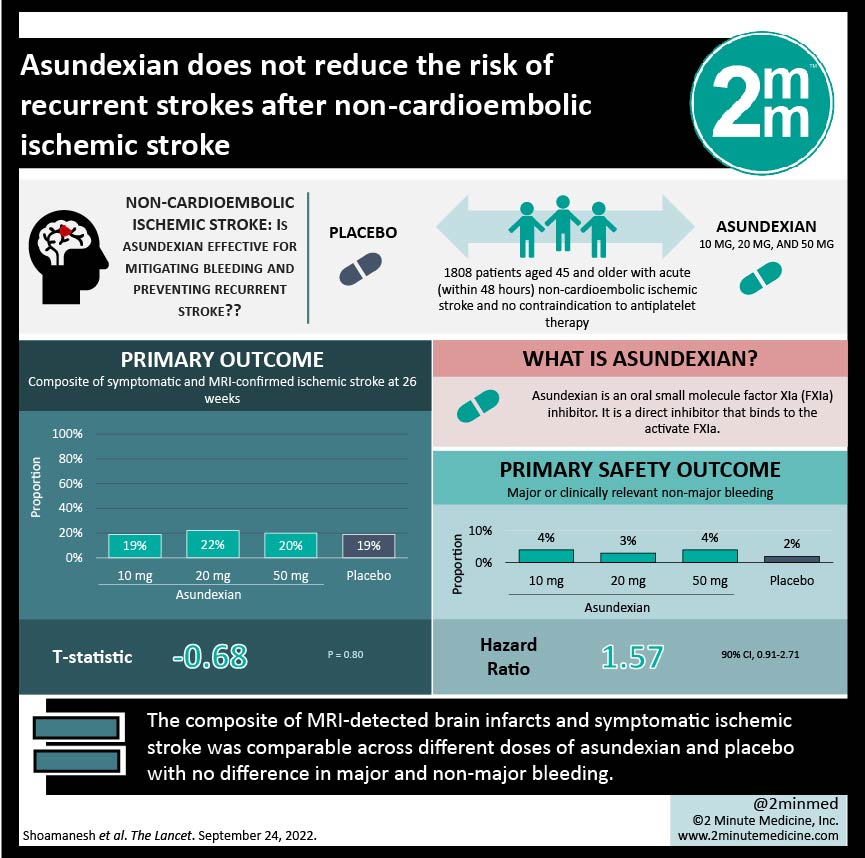1. The composite of MRI-detected brain infarcts and symptomatic ischemic stroke was comparable across different doses of asundexian and placebo.
2. There was no difference in major and non-major bleeding between asundexian and placebo.
Evidence Rating Level: 1 (Excellent)
Study Rundown: Non-cardioembolic ischemic strokes represent a majority of strokes and possess a high recurrence rate despite treatment. First-line therapy includes short-term dual antiplatelet therapy followed by long-term single antiplatelet therapy. Although dual-pathway antithrombotic therapy can be beneficial, it leads to increased bleeding. Asundexian is a factor XI inhibitor that may mitigate bleeding while preventing recurrent stroke. This randomized controlled trial aimed to assess the safety and efficacy of asundexian in patients with acute-onset non-cardioembolic ischemic stroke. The primary outcomes included bleeding risk and a composite of symptomatic and MRI-confirmed ischemic stroke at 26 weeks. According to study results, the safety and efficacy of asundexian was comparable to that of placebo. Asundexian did not reduce the risk of MRI-detected covert brain infarcts or recurrent ischemic strokes compared to placebo. This study was strengthened by a large sample size with patients from various countries, thus increasing its generalizability.
Click to read the study in The Lancet
Relevant Reading: Rivaroxaban for Stroke Prevention after Embolic Stroke of Undetermined Source
In-depth [randomized-controlled trial]: Between Jun 15, 2020, and Jul 22, 2021, 1880 patients were screened for eligibility across 196 hospitals in 23 countries. Included were those aged ≥ 45 years with no contraindication to antiplatelet therapy. Altogether, 1808 patients (455, 450, and 447 to asundexian 10 mg, 20 mg, and 50 mg, respectively, and 456 to placebo) were included in the final analysis. The primary efficacy outcome of symptomatic and MRI-confirmed ischemic stroke at 26 weeks was similar in all groups (19% asundexian 10 mg, 22% asundexian 20 mg, 20% asundexian 50 mg, and 19% placebo, t statistic -0.68, p=0.80). This was also the case for the primary safety outcome of major or clinically relevant non-major bleeding (4% asundexian 10 mg, 3% asundexian 20 mg, 4% asundexian 50 mg, 2% placebo, hazard ratio [HR] 1.57, 90% confidence interval [CI] 0.91-2.71). Overall, findings from this study suggest that the safety and efficacy profile of asundexian is similar to placebo for management of acute-onset non-cardioembolic ischemic stroke.
©2022 2 Minute Medicine, Inc. All rights reserved. No works may be reproduced without expressed written consent from 2 Minute Medicine, Inc. Inquire about licensing here. No article should be construed as medical advice and is not intended as such by the authors or by 2 Minute Medicine, Inc.



